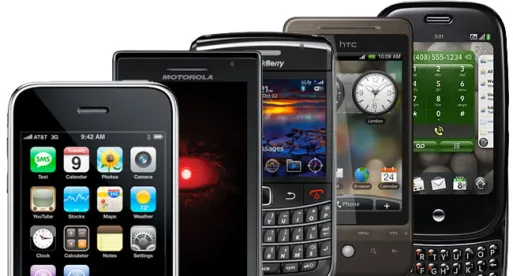Introduction
In its first design patent case in over a century, the Supreme Court on Tuesday, December 6, 2016, reversed a damages award Apple Inc. (“Apple”) had won over Samsung Electronics Co., Ltd. (“Samsung”) in their protracted patent battle. The design patents at issue were directed to certain elements of Apple’s iPhone. The Court focused its attention on the meaning of the term “article of manufacture,” suggesting that the Federal Circuit’s definition, which encompassed the entire phone, might be too broad. Instead, the Court determined that “article of manufacture” could be limited to a particular component of a product, regardless of whether that component is severable (or sold separately) from the product as a whole. Declining to decide how much money Apple was entitled to under this new interpretation, the Court remanded the case to the Federal Circuit for further proceedings.
Apple v. Samsung in the Lower Courts
In April 2011, Apple sued Samsung in the Northern District of California, accusing it of infringing various patents and diluting trade dress that covered the Apple iPhone. [1] Following trial, the jury agreed with Apple that Samsung smartphones did, in fact, infringe and dilute Apple’s patents and trade dress and awarded it over $1 billion. [2] A partial retrial on damages followed in which the jury awarded Apple $290,456,793 (on top of the $639,403,248 that had been upheld by the district court). [3] The district court also upheld this award and entered a final judgment in favor of Apple. [4] Samsung appealed the verdict to the Federal Circuit. [5]
The design patents on appeal claimed certain design elements incorporated into the iPhone, such as elements on the front face with rounded edges or rounded edges and a raised rim and the iPhone’s home screen layout, i.e., “a graphical user interface” including icons arranged in a grid formation on a display screen. [6] The Federal Circuit affirmed the district court’s denial of Samsung’s motion for judgment as a matter of law on design patent infringement and Samsung’s alternative motion for a new trial.[7] In arguing against the damages award, Samsung contended that damages “should have been limited to the profit attributable to the infringement because of ‘basic causation principles.’” [8] In other words, Samsung claimed that Apple failed to demonstrate that infringement of its “limited design patents” caused “any Samsung sales or profits.” [9] Rather, Samsung explained, consumers chose its phones for a variety of unrelated factors. [10]
The Federal Circuit rejected this argument, noting that Congress had explicitly removed the apportionment requirement in design patent cases in the Patent Act of 1887, instead authorizing the award of total profit from the article of manufacture bearing the patented design. [11] The relevant section, codified as 35 U.S.C. § 289, now reads:
Whoever during the term of a patent for a design, without license of the owner, (1) applies the patented design, or any colorable imitation thereof, to any article of manufacture for the purpose of sale, or (2) sells or exposes for sale any article of manufacture to which such design or colorable imitation has been applied shall be liable to the owner to the extent of his total profit, but not less than $250, recoverable in any United States district court having jurisdiction of the parties. Nothing in this section shall prevent, lessen, or impeach any other remedy which an owner of an infringed patent has under the provisions of this title, but he shall not twice recover the profit made from the infringement. [12]
Purportedly bound by the “clear statutory language,” the Federal Circuit refused to adopt the rule of causation suggested by Samsung. [13] Samsung argued, in the alternative, that “profits awarded should have been limited to the infringing ‘article of manufacture,’ not the entire infringing product.” [14] It pointed out that the design patents did not cover the entire phone, but only particular features, referencing a Second Circuit case in which the court had “allowed an award of infringer’s profits from the patented design of a piano case but not from the sale of the entire piano.” [15] The Federal Circuit was unpersuaded, noting that a piano case is a distinct article of manufacture from the piano itself. [16] Here, in contrast, “the innards of Samsung’s smartphones were not sold separately from their shells as distinct articles of manufacture to ordinary purchasers,” meaning that the features covered by the design patent could not be considered separately from the phones as a whole. [17] The Federal Circuit thus affirmed the design patent infringement damages awarded. [18]
Supreme Court of the United States
On December 6, 2016, the Supreme Court rendered its first decision on a design patent case since 1885. [19] The Supreme Court focused on whether § 289, for the purposes of damages calculations, limited the “article of manufacture” to the product sold to the consumer or whether the “article of manufacture” could also be a component of that product. [20] Notably, the Court explained, § 289 necessitates an award of “total profit” from the manufacture or sale of the “article of manufacture to which [the patented] design or colorable imitation has been applied.” [21]
To address this question, the Court employed a two-step test. First, the Court identified the appropriate scope of the “article of manufacture” to which the infringed design has been applied. [22] In a rather simplistic approach, the Court turned to the dictionary definitions of two key terms of § 289. [23] Because a component of a product is a “thing made by hand or machine,” the Court reasoned that incorporating a component into a larger product “does not put it outside the category of articles of manufacture.” [24] Markedly, this interpretation did not deviate in any way from the Patent Office and courts’ general understanding of 35 U.S.C. § 171, which makes “new, original and ornamental design[s] for an article of manufacture” eligible for patent protection. [25] This analysis is also compatible with 35 U.S.C. § 101, which makes “any new and useful . . . manufacture . . . or any new and useful improvement thereof” eligible for utility patent protection. [26] As such, the Court rejected the Federal Circuit’s reliance on whether consumers could purchase the components separately from the smartphone as irreconcilable with the text of § 289. [27]
The absence of adequate briefing related to the issue of whether the relevant article of manufacture is the smartphone, or a particular smartphone component, prohibited the Court from making a final determination regarding the first step of its own test. [28] As a result, the Court could not advance its analysis to the second step — calculation of the infringer’s total profit made on that article of manufacture. [29] Thus, the Court reversed the Federal Circuit’s judgment and advised that the Federal Circuit will “address [the] remaining issues on remand.” [30]
Practical Implications
The Supreme Court’s decision on Tuesday reopened the door to battles over the proper scope of § 289’s “article of manufacture,” giving hope to defendants that the term can mean something less than the product sold to the consumer in its entirety. Now more than ever, opposing parties should put up a fight for either the narrowest or broadest interpretation of the phrase, depending on which side of the “v” that party sits. The Court’s explicit citation to the Brief for United States as Amicus Curiae in the text of its decision arguably sheds some light on the test one might expect to be applied by the Federal Circuit. [31] In its brief, the DOJ urges the Court to consider three elements in its “article of manufacture” inquiry: (1) the scope of the design claimed in the plaintiff’s patent; (2) the relevant prominence of the design within the product as a whole; and (3) whether the design is conceptually distinct from the product as a whole. [32]
Notes:
[1] See Apple Inc. v. Samsung Elecs. Co., Ltd., 786 F.3d 983, 989 (Fed. Cir. 2015).
[2] Id. at 990.
[3] Id.
[4] Id.
[5] Id.
[6] See id. at 996–97.
[7] Id. at 1005. On appeal, the Federal Circuit vacated the portion of the damages award attributable to the jury’s finding that the trade dress was protectable and diluted by Samsung. Id. The court reasoned that Apple’s trade dress, covering the iPhone’s appearance and icon layout, had useful functions and, therefore, was not protectable. Id. at 995, 996. Importantly, “Apple fail[ed] to rebut the evidence that the elements in the unregistered trade dress serve[d] the functional purpose of improving usability.” Id. at 994. The court also affirmed the jury’s finding that Samsung’s smartphones infringed Apple’s utility patents and rejected Samsung’s arguments that the jury instruction and damages theories were legally unsound. Id. at 1001, 1004–05.
[8] Id. at 1001.
[9] Id.
[10] Id.
[11] Id.
[12] 35 U.S.C. § 289 (emphasis added).
[13] Apple v. Samsung, 786 F.3d at 1002.
[14] Id.
[15] Id. (citing Bush & Lane Piano Co. v. Becker Bros., 222 F. 902, 904–05 (2d Cir. 1915)) (emphasis in original).
[16] Id.
[17] Id.
[18] Id.
[19] Samsung Elecs. Co., Ltd. v. Apple Inc., No. 15-777, 580 U.S. ___ (2016).
[20] Id. at 1.
[21] Id. at 5.
[22] Id.
[23] Id. at 6. The Court noted that an “article” is just “a particular thing,” while the term “manufacture” means “the conversion of raw materials by hand, or by machinery, into articles suitable for the use of man,” and “the articles so made.” Id.
[24] Id.
[25] Id. at 6–7.
[26] Id. at 7.
[27] Id.
[28] Id. at 8.
[29] Id.
[30] Id.
[31] Id. (“The United States as amicus curiae suggested a test, see Brief for United States as Amicus Curiae 27–29, but Samsung and Apple did not brief the issue. We decline to lay out a test for the first step of the § 289 damages inquiry in the absence of adequate briefing by the parties.”).
[32] Brief for United States as Amicus Curiae 27–29.




 />i
/>i
